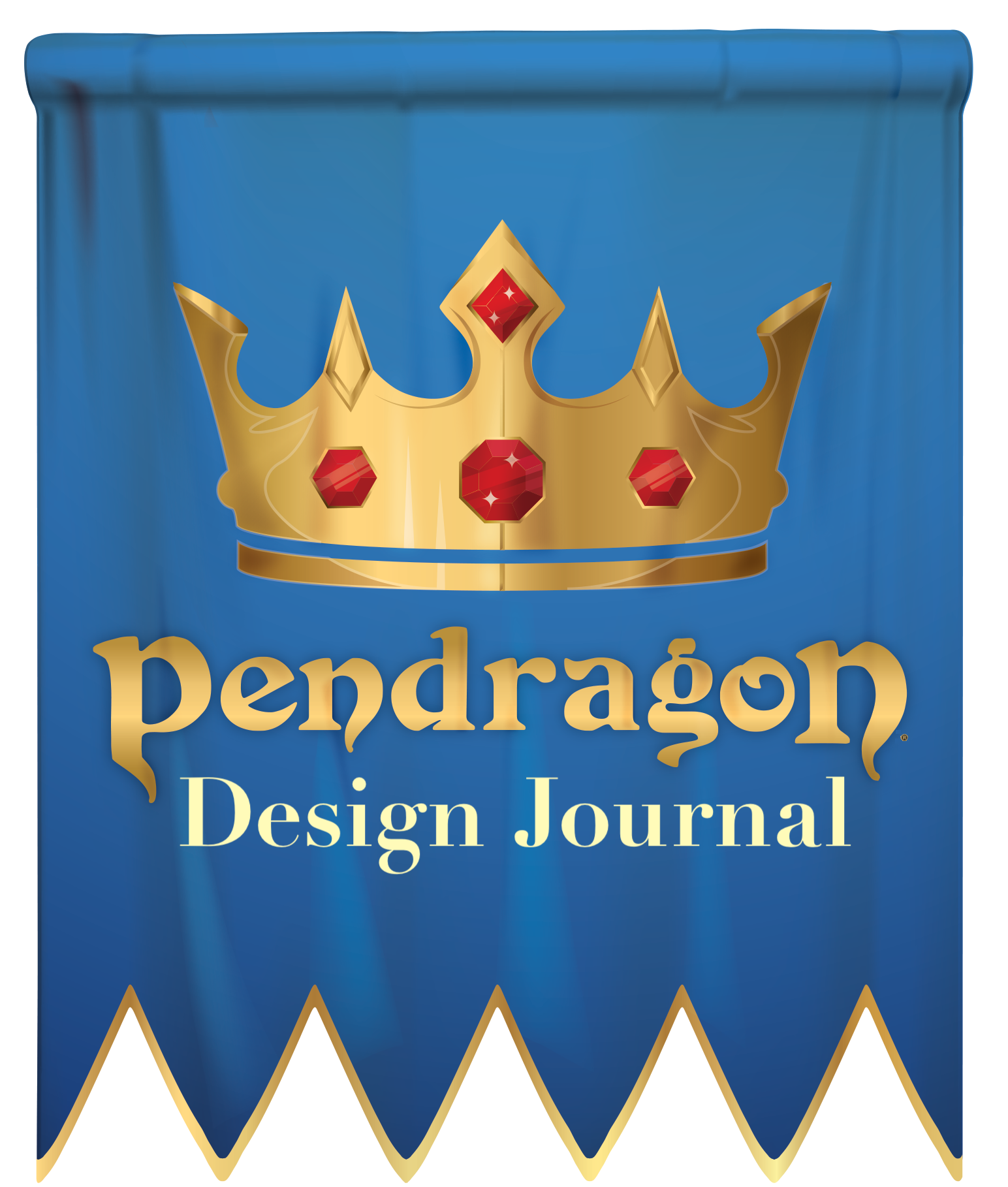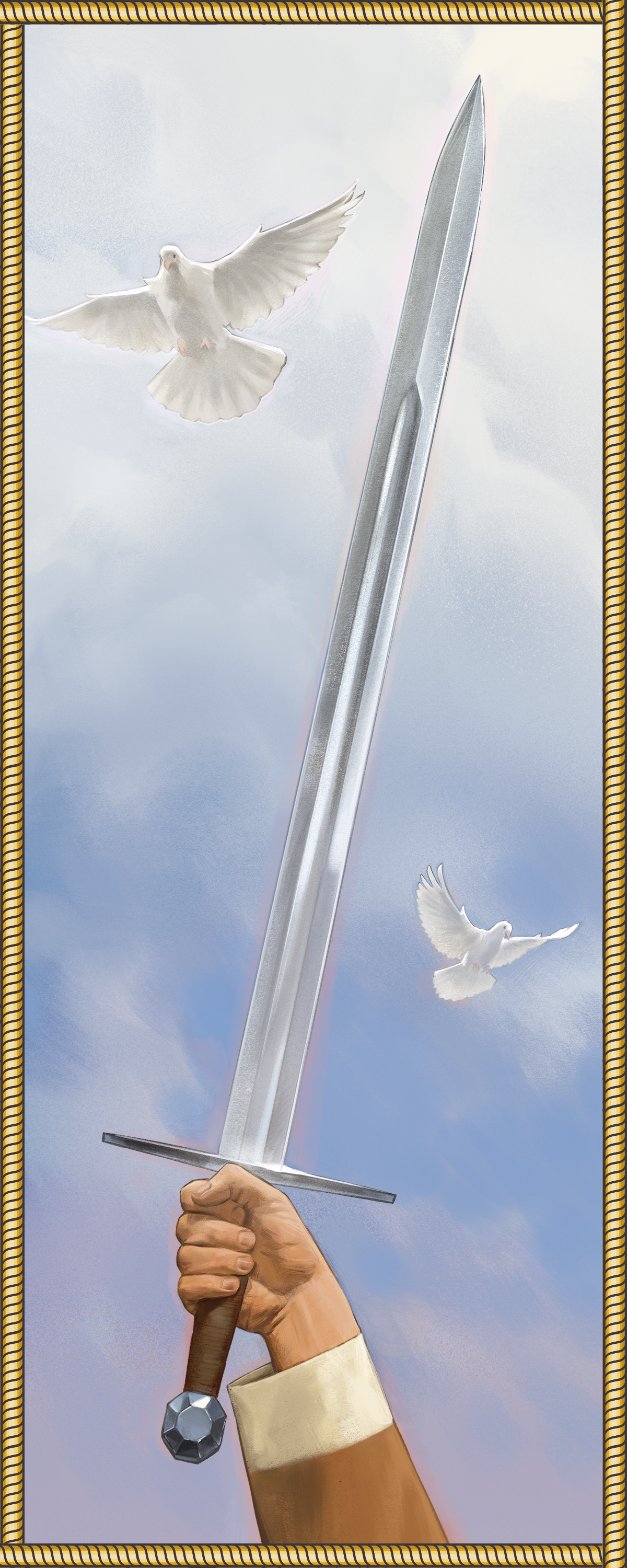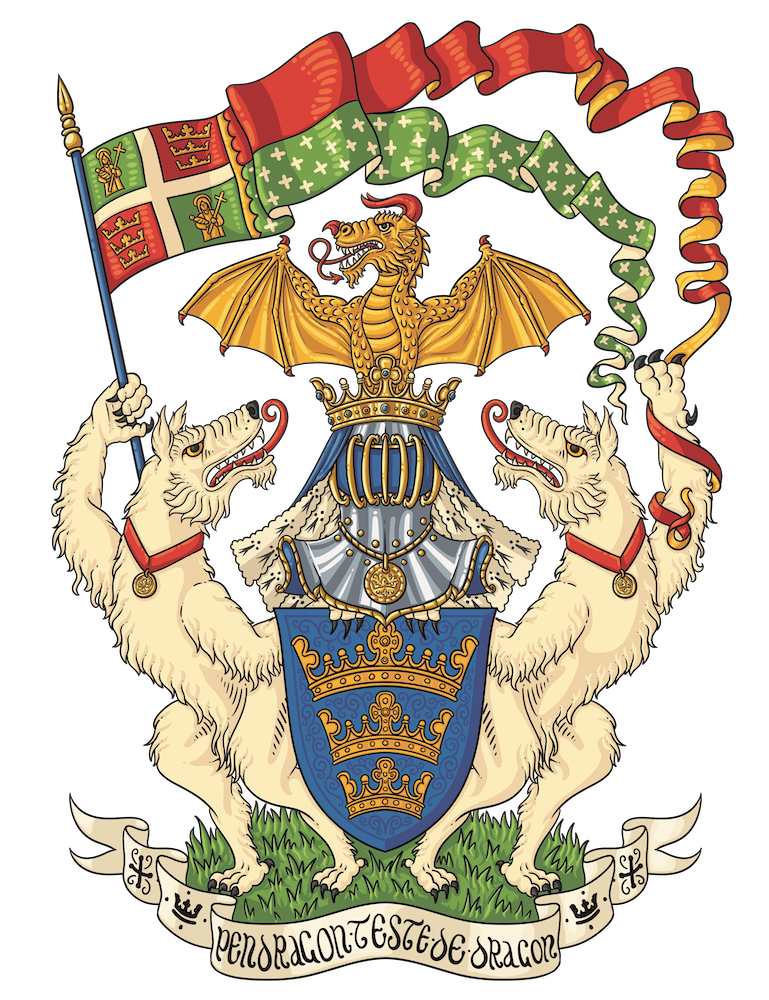Pendragon Design Journal #2: Bringing the Light in Sixth Edition
Posted by Michael O'Brien on 29th Sep 2021

By David Larkins, Pendragon line editor.
A new edition of the Pendragon RPG is coming! The intention of this series of design journals by Pendragon line editor David Larkins is to trace the path of development, starting in the early 1980s and culminating with the forthcoming new edition of the Pendragon RPG, which will be first to be wholly published by Chaosium in a quarter-century.
- Pendragon Design Journal #1: Where It All Began

The path to the forthcoming 6th edition of Pendragon formally began on April 5th, 2010, when Greg Stafford sent out an email to his team of collaborators (whom he referred to as his “Household”) outlining his vision for the new edition—his Ultimate Edition.
Here is how Greg's fateful email began, in part:
My Fellows,
Thank you for accepting my offer to help out on the new King Arthur Pendragon 6th edition, and its supplements.
Yes, that is correct. I plan to release a new edition of KAP. The core book and game, the “real” KAP, is about adventuring knights….
The innovations and changes will actually be few in number…. My desire is to have a set of rules that provides everything that a player needs to play an adventuring knight, unencumbered by anything but his goals and passions….
Now, one thing is that I want to be sure that the core game functions of itself, and also anticipates all of the below….
Greg then goes on for several pages, outlining his tentative plan for the sixth edition line. Looking over this today, it is striking to see how, even though the particulars changed quite a bit in the development, the central vision has remained essentially unaltered over the past ten years. Greg’s desire to make the core rules into a focused resource for playing adventuring knights and build out from there remains a key facet of Chaosium’s vision for the products to come.
The key word is modularity: start with the adventuring knight and add other facets to the game to taste. (I will talk more about how we intend to realize this vision in future Design Journals.)
As reviewed in last month’s installment, Greg first started to work on what he would come to call his magnum opus in the early 1980s by conducting a close reading of Malory’s Le Morte d’Arthur and other Arthurian texts and then adapting the Basic Roleplaying system around his notes.
Four editions of the game would follow (plus a phantom “2nd edition” that was never actually published). Each edition saw tweaks and changes based on Greg’s evolving understanding of the literature and how he wished to represent it in the mechanics and setting of Pendragon.
For sixth edition, Greg’s objective was to consolidate all that work into a coherent whole, one that reflected his latest understanding of what the game should be, which he achieved with the completed first draft of the rules shortly before his passing in 2018.
It is notable, for example, that the game’s subtitle evolved from first edition’s “Game of Quest, Romance, & Adventure” to sixth edition’s “Game of Valor, Honor, & Tragedy”.
This is not to say that there is no room for questing, romance, or adventure in the new edition—far from it! But over time, Greg came to understand that the mechanics and setting of Pendragon tend to produce gaming experiences of a much deeper, emotional timbre. Characters are tested. Some show Valor in the face of despair. Some hold to Honor when all else is lost. Yet, as we all know, Arthur’s dream is fated to end in Tragedy. How we navigate these challenges—finding out what kind of knight you really are, and building a legacy of a brighter tomorrow—is the heart of the Pendragon experience.
One of my favorite bits of text from Greg’s sixth edition manuscript is a little essay he wrote entitled “Bringing the Light”. I will close by sharing it here in its entirety:
The medieval Britain of history, inherent in the old literature, was a dismal, violent, and cruel place, with outdated standards of behavior. Setting the game in this world was a deliberate choice, for alongside the dark overtones comes hope for a brighter tomorrow.
In the campaign, the Gamemaster paints a harsh background as the reality within which the characters move. Initially, the Gamemaster’s characters are merciless and brutal. Player-knights may choose to remain in that unenlightened realm of history—this kind of behavior does not penalize them, but neither rewards them. But they also have a choice to join the struggle to improve the world. Their actions can stand as shining lights of exceptional behavior, breaking the old ways and preparing for a better realm.
The story of King Arthur is about the struggle to improve life. With his faithful knights, he manifests the dream of a better world. The game dramatizes this heroic effort in its play. Great rewards go to those who struggle to improve the kingdom.
King Arthur changes the world, slowly to be sure, but in general for the better. Bloodthirsty warlords, selfish sorcerers, and even the environment itself in the form of the Wasteland, all conspire against these changes. The Player-knights are an important part of the struggle for the betterment of Britain.
The improvements in the lives of women and commoners are hallmarks of Arthur’s efforts. Ladies make great gains both socially and legally over the course of his reign. Women may become knights if they wish, gain the power to choose their own husbands, and, whether knight or noblewoman, eventually may inherit their due estates and take care of them without a warden. Commoners are among King Arthur’s earliest supporters, and he even forms Parliament to give them a place to exercise their powers alongside the clergy and lords.
The Gamemaster decides how much resistance hinders these changes. You may of course decide on presenting a fantasy realm that is better than our modern world, with fairness, justice, and goodwill everywhere. However, that attitude significantly alters the stories, and what the stories mean. The best balance comes when the world is at first medieval, reactionary, and reluctant to change; yet slowly yields under the influence of the Player-knights and their allies in Arthur’s court working to create a luminous realm.

Art from the forthcoming 6th edition of Pendragon
—TOP: Andrey Fetisov
—BOTTOM: Katrin Dirim
